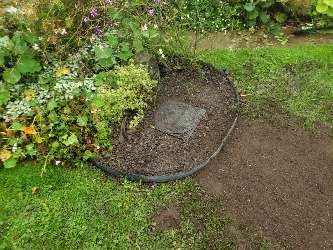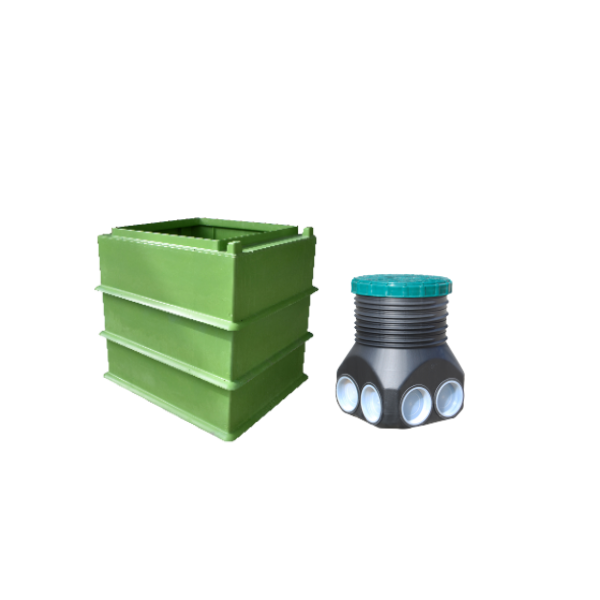SEWAGE TREATMENT
Septic tank regulations 2020 in UK (England and Wales)
OVERVIEW
The 2020 septic tank regulations in the UK are now in full effect. Suppose you own or manage property in either England or Wales, particularly in the countryside. In that case, there is a strong chance that you have a septic tank.
Septic tanks are a standard solution when dealing with old properties or new builds that do not have direct access to the main drainage.
The 2020 General Binding Rules apply to you if you fall within the categories outlined if you are:
- The owner of the property where the system is in place.
- A person that uses the system.
- A person currently selling a property that employs such a system.
- The owner of an investment property/holiday home where operation and maintenance of the system remains with the property owner.
- A tenant or leaser of the property who has, in writing (please review your tenant agreement), taken responsibility for the system’s operation and maintenance while your tenancy is in place.
If you are selling a property, you are now legally required to inform any potential buyers in writing if the property has a septic tank and provide all information regarding maintenance requirements and the system’s location. You must ensure your installation complies with the septic tank regulations 2020 UK.
If you have any questions, feel free to call us
What are the Septic Tank Regulations 2020 UK?
Under the 2020 septic tank regulations (or 2020 General Binding Rules), septic tanks can no longer discharge directly into a watercourse. They must upgrade their sewage treatment system by January 1, 2020, or sooner if the property is going up for sale before this deadline. The tank will also require replacement if the Environmental Agency (EA) finds it causing pollution.
By these regulations, your septic tank or wastewater treatment plant has to meet British Standards BS EN 12566. At the same time, any drainage field is required to meet BS EN 6297:2007 standards. The new rules aim to reduce the level of pollution present in national waterways by better controlling and regulating discharge requirements to a watercourse.
Note: Different rules may apply for septic tank regulations in Scotland, Wales or further locations near a groundwater source protection zone.
For information relating to individual locations within the UK, visit official sources of the required regulatory and advisory bodies:
What options do I have?
If your current system does not meet the 2020 Gen
ral Binding Rules requirements, you have three options:
- Connect to the local main sewer system if one is close enough for this.
- Install a drainage field if you have enough suitable land available.
- Replace your non-compliant system with a modern and efficient sewage treatment plant.
You must have your septic tank repaired or replaced if it has any of the following faults:
- Cracked pipes, cracked walls, missing dip pipes, faulty mortar joints, etc.
- If any of the pipes or walls show signs of leakage.
- Pipe blockages entering, inside, or leaving the tank.
- Backing up issues with the tank or manholes.
- Notable soggy areas on the ground vicinity near the drainage field.
- The pooling of water around the tank or drainage field.
- An unusual smell emanating from the drainage area or tank.
For a summary of your responsibilities relating to the new regulations and how you may be affected, download our free eBook today!
How do I Become Septic Tank Regulations 2020 Compliant?
- The existing septic tank gets replaced by a sewage treatment plant certified CE12366-3. The treated effluent is environment-friendly and suitable for discharge to a watercourse.
- Discharge to the watercourse stopped and redirected to a drainage field to be designed, installed/constructed to meet British Standard BS 6297 2007.
- Connect to the main sewer if available.

What is a drainage field?
A drainage field is a designated area where discharged effluent gets dispersed from septic tanks or wastewater treatment systems. It consists of a series of perforated pipes laid under the earth, dispelling the effluent over a designated area based on tests carried out during installation.
This area allows for further wastewater treatment after initial processing and before waterway dispersion, thus improving quality.

Required 2020 Septic Tank Regulatory Standards
If a septic tank was installed before 1983, when standards were in place, it most likely does not meet the required standards. To do so, the following is necessary;
- CE certificate
- Compliance with BS standards
- Sized and installed correctly (drainage field also)
- Regularly desludging/emptied and maintained
For a summary of your responsibilities relating to the new regulations and how you may be affected, download our free eBook today!
What are the differences between septic tanks and sewage treatment plants?
Sewage treatment plants provide treatment of the wastewater inside a tank. In contrast, septic tanks separate the solids from the liquid in the tank and use a percolation area or sewage treatment filters after the tank to provide the final treatment of the effluent.
A quick way of identifying the solution type that your property employs is by applying the following parameters:
- Most sewage treatment plants require power to run the aeration and carry out the wastewater treatment process; septic tanks do not.
- A septic tank generally requires emptying once per year. In contrast, sewage treatment plants get opened at intervals of three to sixty months.
- The level of treatment from a sewage treatment plant is very high, allowing for discharge directly to a stream, ditch watercourse or drainage field.
- A septic tank produces a much more pollutant effluent, which must be discharged to a drainage field for further treatment from natural aerobic soil bacteria to process the effluent to an acceptable purification level equal to that of a sewage treatment plant.
What to know when selling a property with a fitted septic tank
- Description of the property’s sewage treatment solution.
- Location of the main elements, drainage field and discharge point.
- Details of any changes or alterations made to the system and drainage field.
- How it should be maintained, including the manufacturer’s manual if available.
- Maintenance records, if possible.
If replacing your non-compliant system with a modern and efficient sewage treatment plant, it is critical to ensure that your new system is sized and installed correctly and by British Water’s Flows & Loads 4 Guidance.
For a complete listing of how the upcoming 2020 regulation changes to the septic tank regulations may affect you, download your free 2020 Septic Tank Regulation Handbook today!
Suppose you are affected by the 2020 septic tank regulations and have further questions. In that case, you can contact us to advise you on the requirements to book a site visitor to request a quote. Tricel has an entire team of experienced technical experts to help find the ideal solution for your situation.

quality
WHY CHOOSE US
Because Tricel manufactures and chooses the best materials for the design of its products. Most Tricel products have warranties of up to 10 years guarantee. All our products within this product range is CE certified to EU safety, health and environmental requirements.
Please find below the list of our products and the warranty that is applied. Note that this warranty is only valid if the sewage system is properly installed by a qualified installer. Please also know that all warranties are subject to correct use of the product, including maintenance as per manufacturer guidelines.
Tricel product range

Tricel Vento Septic Tank
Shallow dig tank, strong & robust underground tank, No electrical or moving parts. Ideal for sites with good drainage & plenty of space.

Tricel Novo Sewage Treatment Plant
Durable & long lasting SMC tank, shallow dig tank, easy installation (Plug and Play), long life components.

Tricel Maxus Sewage treatment Plant
Commercial plant. Submerged Aerated Filter (SAF) technology. Ideal for every project over 50 Population Equivalent.

Tricel Puraflo Packaged filter
Ideal for sensitive sites, compliant to British Standard, small footprint.

Tricel Pumping Stations
Pump fluids from one place to another where gravity drainage cannot be used, easy and trouble-free installation
50 YEARS IN BUSINESS
A highly successful multinational corporation with over 50 years’ valuable industry experience
SEWAGE TREATMENT PLANTS
Plants available for all capacities, from 1PE up to 50PE. Free advice on request.
FAST DELIVERY
On-time delivery is a core requirement of our successful business operations
Frequently Asked Questions
A cesspool is a simple storage vessel with an inlet and no outlet. It’s a sealed storage vessel; all the water coming in stays within the tank. The advantage is it doesn’t need an outlet. The disadvantages are: there is no treatment, the tanks are huge, and it needs regular emptying. Everything which has gone in must be sucked out. Ideal for sites which have got very infrequent use (Sheppard huts, for example).
A septic tank has an inlet and an outlet; it’s a simple overflow system. See how a septic tank works here. The advantages of the septic tank are there is no mechanic and no electricity requirement for it to work. The disadvantages are you are discharging dirty water, and untreated sewage effluent, as a tiny breakdown has occurred in the tank. You can only release water to a drainage field for the water to go through the subsoil to treat the water.
A sewage or package treatment plant has an inlet and an outlet; the wastewater is treated inside the tank. Aeration is provided inside the tank for the aerobic bacteria to feed on the waste and remove it from the liquid. The advantages are the wastewater is treated and can be discharged to a watercourse.
Many package treatment plants are available on the market:
- Trickles filters
- Rotating Biological Contactors (RBC)
- Mobile media bio-reactors
- Activated Sludge systems
- Sequence Batch Reactor systems (SBR)
- Fixed Bed Systems (like the Tricel Novo)
UK sewage treatment plants must comply with EN 12566-3 2005 regulations.
You should also hire a professional to install your sewage treatment system. For any sewage treatment plants you intend to install, you should also check your local guidelines to determine if planning permission is required.
A sewage treatment plant is where domestic wastewater and sewage are treated. The sewage treatment plants break down organic matter through the primary settlement and aeration chambers. Sewage treatment plants require little maintenance and have low running costs, and sewage effluent is discharged into drainage fields or watercourses.
For example, the required standards are 20:30:20 for BOD, SS, and NH4.
Tricel® has achieved an 11:16:9 result during independent testing.
In order for the biomass to reach its optimum purification, it may take up to 16 weeks.
You may be able to discharge directly into a watercourse or to a percolation area depending on your region. Find out which option is best for you by contacting your local council.
The sewage treatment plant’s size depends on the effluent volume from your house. It is determined by the number of people using the system, which is calculated based on the number of bedrooms in your home. If you need further information, contact our team.
Occasionally, your sewage treatment plant will need to be emptied due to the accumulated sludge inside – usually once a year. The frequency of emptying your treatment plant depends on its size and usage. See our dedicated page about desludging septic tanks and wastewater treatment plants.
1) to prevent surface water from entering the tank and overloading the system as this can inhibit growth of the bacteria and could reduce the effluent quality.
2) to prevent water getting into blower housing which can harm the control panel and the air blower.
Learn more about Tricel Novo risers.
Get in touch








